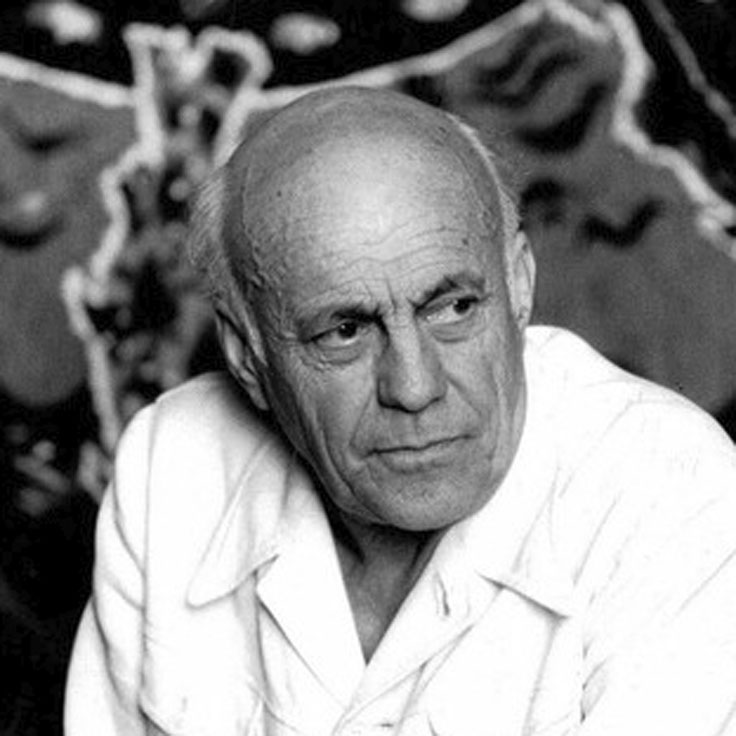
JEAN LURÇAT
1st July 1892 (Bruyères) – 6th January 1966 (Saint-Paul-de-Vence)
BIOGRAPHY
Painter and tapestry model painter, creator of ceramics.
With his architect brother André́, he moved to Paris in 1912. He intended to go into medicine but abandoned this path and entered into an apprenticeship with Victor Prouvé; he then attended the Académie Colarossiand the École des Beaux-Arts. With three friends he founded the magazine Les Feuilles de mai in 1913. His first exhibition took place in Zurich in 1917; his painting was influenced by cubisme and medieval art. His first tapestries made ready on canvas were produced by his mother, then by his partner Marthe Hennebert. In 1920, he moved into rue Nollet and made the acquaintance of Pierre Chareau living nearby, with whom he would work on numerous occasions: for the Bernheim family’s Château de Villeflix and for the tent-stitch tapestries found on the divan and armchairs of the Maison de Verre. His works were displayed at the Salon des Indépendants. He met Louis Marcoussis, Picasso and Max Jacob in 1921, the year in which he produced the decor and costumes for the show Celui qui reçoit des gifles for la Compagnie Pitoëff. In 1924, he moved into a house of the Villa Seurat built by his brother. In 1932, Jeanne Bucher published eight of his pen and ink drawings. He divided his time between theatre decor, notably for the ballets of George Balanchine, tapestry cartoons for Marie Cuttoli, painting travelling. He went to the Soviet Union in the 1930s and joined the AEAR (Association des Étudiants et Artistes Révolutionnaires) in Paris. His works were presented at the Selections exhibition organised by the Valentine Gallery in New-York in December 1932, alongside those of Georges Braque, André́ Derain, Raoul Dufy, Henri Matisse, Pablo Picasso, among others. He dedicated more and more of his time to tapestry, gradually abandoning his work as a painter. His meeting with François Tabard, heir of a line of upholsterers in Aubusson, was decisive. He produced his first important works : L’Orage (1933) in basse lisse and The Illusions d’Icare (1936), in haute lisse at the Gobelins. But it was at Aubusson that he worked on the renewal of the craft of tapestry, which he wanted to see break free from its historical influences. He revived ancient techniques, and classified and categorised colours, which allowed him to reduce the time required to create a tapestry. During the Second World War, he clandestinely wove political works at Aubusson, such as Liberté (1943) inspired by a Paul Éluard poem above all, after the war, the tapestry L’Apocalypse (1948) a homage to the martyrs of the Plateau d’Assy. His masterpiece remains Le Chant du Monde which he produced from 1956 to 1961, 80 metres long by 4.50 metres tall, which would from then on be permanently exhibited at the former Saint-Jean d’Angers hospital. In Aubusson in 1957, work started on this giant endeavour in ten panels illustrating the fears and hopes of man in the atomic era.
His work as a ceramicist started in 1951 with the workshops of Sant Vincens in Perpignan for which he drew everyday objects and large mural compositions such as the ceramic work for the Maison de la radio in Strasbourg in 1959.
His name appeared in the list of active members of the UAM drawn up by René Herbst in 1955.
He died in Saint-Paul de Vence on 6th January 1966.
AVAILABLE WORKS

